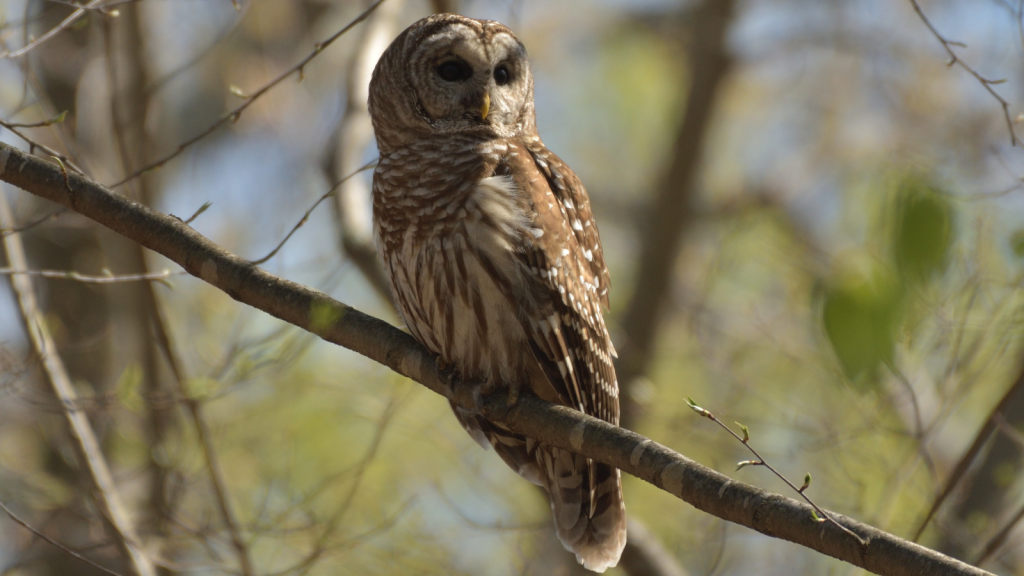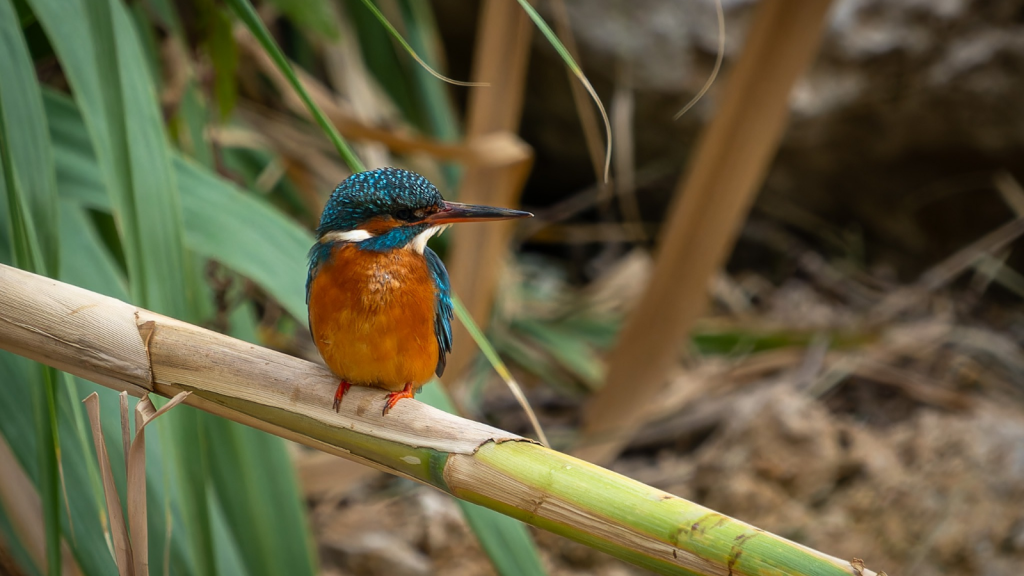North America’s temperate forests are a wonder of nature, teeming with life in every nook and cranny. These lush woodlands, with their mix of deciduous and coniferous trees, provide a perfect home for a wide array of creatures. From the forest floor to the towering canopy, animals have adapted to make the most of this rich environment. The changing seasons bring new challenges and opportunities, shaping the lives of the forest inhabitants. In these woods, you’ll find a fascinating cast of characters, each with its own unique way of thriving in this complex ecosystem. Here are 15 animals that have mastered the art of living in North America’s temperate forests.
White-Tailed Deer

The white-tailed deer is a common sight in North American forests. These graceful creatures are well-adapted to forest life, with keen senses that help them avoid predators. They feed on a variety of plants, including leaves, twigs, and acorns. In winter, their coat grows thicker and turns greyish-brown for better camouflage against the bare trees.
Black Bear

Black bears are powerful omnivores that roam the temperate forests of North America. Despite their name, they can be brown, cinnamon, or even white in colour. These bears are excellent climbers and often scale trees to escape danger or reach food. They have a varied diet that includes berries, nuts, insects, and occasionally small mammals.
Red Fox

The red fox is a clever and adaptable predator found throughout North American forests. Their distinctive red coat helps them blend in with the forest floor, especially in autumn. Foxes are opportunistic feeders, eating everything from small mammals and birds to fruits and insects. They’re known for their playful behaviour and sharp intelligence.
Eastern Gray Squirrel

Eastern gray squirrels are agile acrobats of the forest canopy. These bushy-tailed rodents are expert tree climbers and jumpers, using their sharp claws and strong hind legs to navigate the treetops. They play a crucial role in forest regeneration by burying nuts and seeds, often forgetting where they’ve hidden them. This inadvertently leads to new tree growth.
Barred Owl

The barred owl is a vocal resident of temperate forests, known for its distinctive “who-cooks-for-you” call. These large, round-headed owls are perfectly adapted for forest life, with excellent hearing and silent flight that allows them to hunt effectively in dense woodland. They primarily feed on small mammals but will also catch birds, amphibians, and even fish.
Pileated Woodpecker

The pileated woodpecker is the largest woodpecker in North America, easily recognised by its striking red crest. These powerful birds chisel large, rectangular holes in trees to find their favourite food: carpenter ants. Their drumming can be heard echoing through the forest, and their excavations create homes for many other forest creatures.
Eastern Box Turtle

The eastern box turtle is a long-lived reptile that makes its home on the forest floor. These turtles have a unique hinged shell that allows them to completely close up for protection. They feed on a variety of forest foods, including mushrooms, berries, and small invertebrates. Eastern box turtles can live for over 100 years in the wild.
American Marten

The American marten is a small, agile member of the weasel family that thrives in mature forests. These tree-climbing carnivores have soft, thick fur that helps them stay warm in cold forest environments. Martens are skilled hunters, preying on small mammals, birds, and insects. They’re also known to eat berries and nuts when available.
Ruffed Grouse

The ruffed grouse is a chicken-sized bird that’s well-adapted to forest life. These birds are known for their explosive takeoff when startled, a useful skill for avoiding predators in dense woodland. Male grouses perform a unique drumming display by rapidly beating their wings, creating a sound that resembles a distant engine starting up.
Timber Rattlesnake

The timber rattlesnake is a venomous pit viper found in forested areas of eastern North America. These snakes are masters of camouflage, their patterned scales blending perfectly with the forest floor. Timber rattlesnakes are ambush predators, lying in wait for small mammals to pass by. They use their heat-sensing pits to locate warm-blooded prey even in complete darkness.
Red-Spotted Newt

The red-spotted newt is a small salamander with a fascinating life cycle. As juveniles, they live on land and are bright orange, earning them the nickname “red eft”. Adults return to water and turn olive green with red spots. These amphibians thrive in moist forest environments, feeding on small invertebrates both on land and in water.
Luna Moth

The luna moth is a stunning insect that calls the temperate forests home. With its large, pale green wings, it’s one of the most beautiful moths in North America. Luna moths spend most of their lives as caterpillars, munching on the leaves of forest trees. The adult moths live for only about a week, focused solely on finding a mate and reproducing.
Fisher

The fisher is a large member of the weasel family that’s well-adapted to life in mature forests. Despite their name, they rarely eat fish, instead preying on small to medium-sized mammals. Fishers are one of the few predators that can successfully hunt porcupines, thanks to their agility and thick fur. They’re excellent climbers and can even climb down trees headfirst.
Wild Turkey

The wild turkey is a large ground-dwelling bird that thrives in forested areas. These birds are surprisingly agile, able to run quickly and fly for short distances despite their size. Turkeys have excellent eyesight and hearing, which helps them avoid predators. They feed on a variety of forest foods, including nuts, berries, insects, and small reptiles.
Red-Backed Salamander

The red-backed salamander is a small, lungless salamander that’s abundant in many North American forests. These salamanders breathe through their skin and the lining of their mouth, requiring them to stay in moist environments. They play a crucial role in forest ecosystems, consuming leaf litter invertebrates and serving as prey for many larger animals.
15 Facts About the Honey Badger, the Fiercest Animal in Africa

The honey badger, a small but mighty creature, roams the African wilderness with a fearless attitude that’s earned it quite a reputation. These tenacious animals have captured the imagination of wildlife enthusiasts and casual observers alike. Despite their name, honey badgers aren’t closely related to European badgers and are more akin to weasels and otters. Their tough-as-nails approach to life and remarkable abilities have made them the stuff of legend. Let’s explore some fascinating facts about these extraordinary creatures that prove why they’re considered Africa’s fiercest animals.
Read More: 15 Facts About the Honey Badger, the Fiercest Animal in Africa
10 Desert Predators With Unique Hunting Adaptations

The harsh desert environment has shaped some of the most remarkable hunters on Earth. These animals have evolved incredible ways to survive and thrive in a world of extreme heat and scarcity. From silent stalkers to venomous ambush experts, desert predators are masters of adaptation. Their hunting techniques are as varied as they are fascinating, each perfectly suited to the challenges of their arid homes. Join us as we explore ten of these amazing creatures and the special tricks they use to catch their prey.
Read More: 10 Desert Predators With Unique Hunting Adaptations
15 Animals That Eat Hornets

Nature never fails to amaze me. Who would’ve thought so many creatures would prey on hornets? Their painful stings and fierce and aggressive behaviour make them seem like a pretty unappetizing meal to me. While hornets might seem like formidable insects that few creatures would dare to tangle with, they actually have quite a few natural enemies. From nimble birds to crafty mammals, plenty of other creatures make meals out of these stinging insects.



